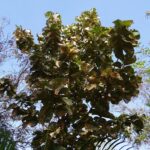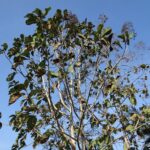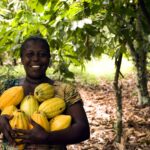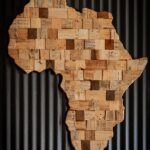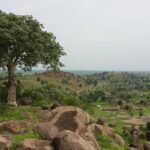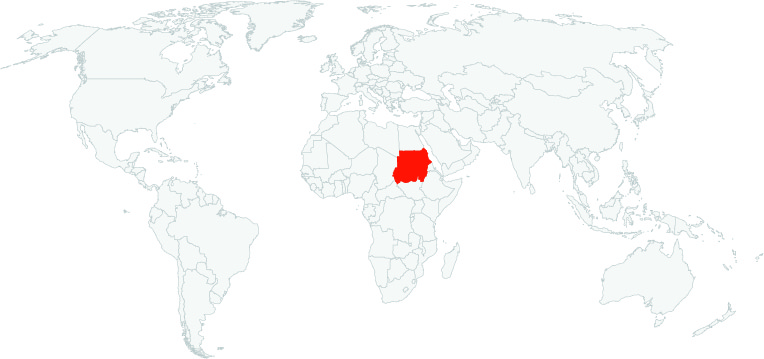
In January, South Sudan’s Environment and Forestry Minister Josephine Napwon stopped the issuing of logging permits to protect teak and other endangered tree species. Concerns have been growing over the smuggling of South Sudanese teak to meet high demand, mostly from India and, to a lesser extent, the Netherlands.
According to the World Bank, South Sudan could earn up to US$150 million in revenue annually from teak, but instead brings in just US$2 million, with the rest leaving the country illegally.
Previous Orders issued by the ministry are ineffective in curbing illegal logging and charcoal trade in South Sudan.
Undersecretary in the Ministry of Environment and Forestry, Jaden Tongun Emilio attributes the ineffectiveness of the orders to a lack of punitive clauses for arrest, prosecution, and imprisonment of illegal loggers. Tongun explained that these orders typically only allow for the confiscation of logging machines, without any provisions for prosecuting the offenders.
The World Bank notes that South Sudan possesses one of the oldest teak plantations in Africa, but much of it has been destroyed by illegal logging, with only about 3,000 hectares remaining under the management of the Equatorial Teak Company.
Kondowa forest southeast of Nyala, the capital of South Darfur, has disappeared due to illegal logging. Displaced Darfuris, having lost their livelihoods in agriculture and herding, became dependent on producing and selling firewood. This led to the destruction of the local plant and animal environment, and the resultant climate change will manifest over time, reducing atmospheric humidity and moderate weather, alongside the complete loss of vegetation cover.
The article focuses on some of the armed conflict leading to this can be considered ‘climate crimes’, to be brought before the International Criminal Court (ICC).
A team led by Tanzanian remote-sensing scientist Robert Masolele used high-resolution satellite data and deep-learning techniques to draw up a map identifying the drivers of forest conversion in Africa.
The research shows that most deforested land on the continent is turned into small-scale farms, with the Democratic Republic of Congo and Madagascar being hotspots for this pattern of forest loss.
With better remote-sensing data, researchers can pinpoint where agriculture is eating into forested areas and where cash crops are replacing woodland. In this work, the group focused on commodity crops like cacao, oil palm, rubber and coffee, which are targeted under the European Union’s recently enacted rules to restrict import of crops linked to deforestation.
The first high-resolution (5 m) and continental-scale
mapping of land use following deforestation in Africa, including humid and dry forests.
Results show, not surprisingly, that the causes of forest loss vary by region. In general, small-scale cropland is the
dominant driver of forest loss in Africa, with hotspots in Madagascar and DRC. In addition, commodity
crops such as cacao, oil palm, and rubber are the dominant drivers of forest loss in the humid forests of
western and central Africa, forming an “arc of commodity crops” in that region. At the same time, the
hotspots for cashew are found to increasingly dominate in the dry forests of both western and southeastern Africa, while larger hotspots for large-scale croplands were found in Nigeria and Zambia.
The European Union Timber Regulation of 2013 has proved ineffectual and it is still easy to ship illegally harvested teak, “the king of woods”, from South Sudan to Europe via India.
In order to meet the enormous demand, India is importing more and more wood from other countries for processing into “Indian” furniture or other objects. Teak is a popular wood but difficult to obtain and whenever a fertile source of teak is restricted by international regulations, such as virgin forests in Thailand and Myanmar, India shifts its focus to new suppliers.
Today, much of the teak in India actually comes from the young East African state of South Sudan, a country where the trade in timber is barely regulated. South Sudanese wood is not prohibited on the European market, but the seller must be able to prove that it comes from a legal source. The chance of that happening is small: 90 per cent of South Sudanese logging is illegal. Any wood that reaches European stores is therefore almost always illegal.
The article points out the five East African countries which are typically (falsely) listed as origin: Uganda, Congo, Tanzania, Burundi or Rwanda. Of those, only Congo and Tanzania actually have teak plantations. According to calculations by the American research firm C4ADS, more than 100,000 tons of teak from South Sudan go on the world market. every year.
Click here to access the Global Illegal Logging and Associated Trade (ILAT) Risk assessment tool and to download the Forest Trends User Guide describing the functionality of the ILAT Risk Data Tool.
Click here to access the Cattle Data Tool.

